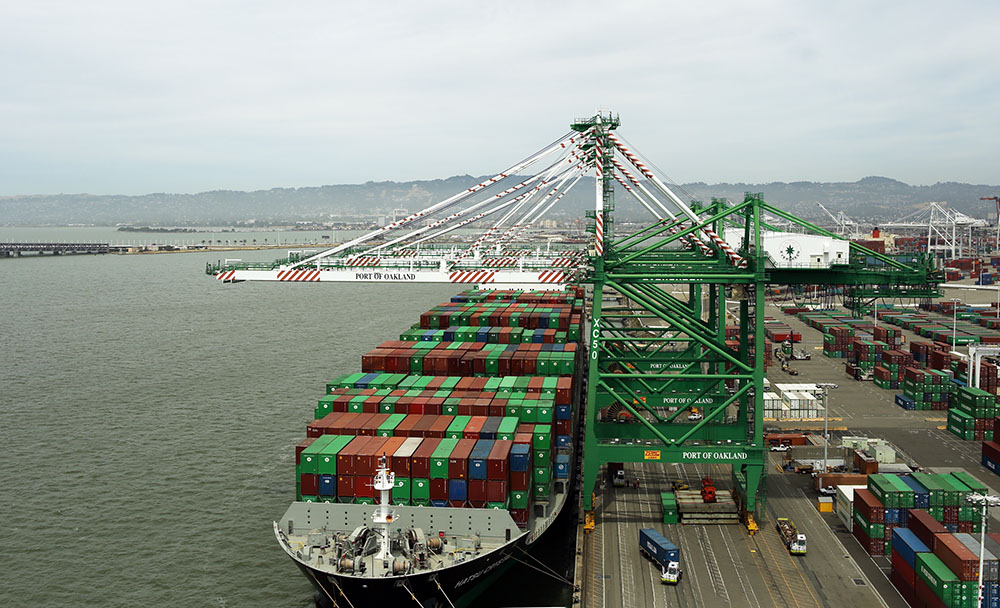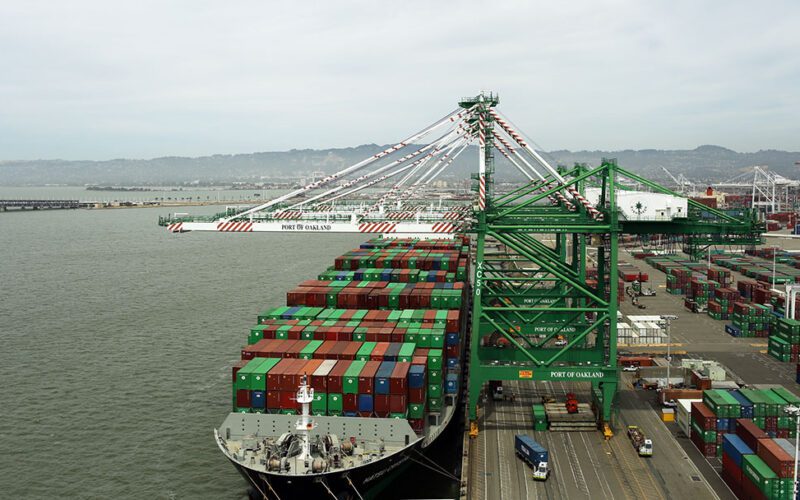
When cargo ships bringing goods from Asia skip U.S. West Coast seaports, greenhouse gas emission levels rise, according to a new study released Aug. 30 by Starcrest Consulting Group.
The 18-page study prepared for the Pacific Merchant Shipping Association looked at vessel sizes, port of origin and destination and other factors to determine that U.S. West Coast seaports have “an environmental advantage over East Coast and Gulf ports” when it comes to the total number of GHG emissions per Asia-borne container.
The study found that the average amount of GHG emissions is 19% higher when Asia-borne cargo heads to East Coast or Gulf Coast ports rather than San Pedro Bay ports. Also, GHGs are 26% higher when the East Coast and Gulf Coast are chosen over ports in the Pacific Northwest, the study found.
For cargo moving through the Port of New York and New Jersey, GHG emissions are 92% higher over the ports of Long Beach and Los Angeles, and as much as 104% over the PNW ports, data show.
For goods moving through Savannah, Georgia GHGs can rise up to 94% over PNW ports, while GHGs can increase by up to 64% if shippers move goods through the Gulf Coast over the ports of Long Beach and Los Angeles.
“This study demonstrates the environmental risk associated with cargo diversion,” PMSA Vice President Thomas Jelenić said. “Public officials must take a holistic approach when it comes to climate change policies. Doing so is essential in keeping cargo and union jobs at the nation’s cleanest ports here on the West Coast, as well as ensuring that GHG emissions are simply not being shifted elsewhere.”

